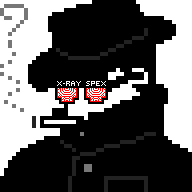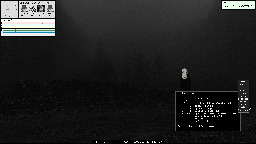[rio] Plan 9 is not UNIX


Non-binary computer witch.
ネットワーク内部から来ています。
¡ACHTUNG!
May contain thoughts and opinions
Viewer digression is advised
http://9p.sdf.org/~bubstance/
mailto:bubstance@9p.sdf.org
openpgp4fpr:5e057c319b634f422db8267189ba712e2779375b


It sounds like Gentoo is literally exactly what you want.
I am currently not using gentoo, and because the packages in its default repos are only updated when necessary, and the break-my-gentoo repo is more of a joke than an actual replacement for arch.
I'm sorry, but I am genuinely confused here.
Gentoo can be both stable and bleeding edge and allows you to mix and match on a per-package basis.
Does setting ACCEPT_KEYWORDS="~amd64" globally not make things bleeding edge enough for you? Grab *-9999 packages instead.
machine: ThinkPad T420
os: ⑨front
cwfsprograms:
clock
For those interested in learning more about Plan 9 and trying it out in a public environment: SDF Public Access UNIX System is hosting their seasonal Plan 9 Boot Camp starting June 20th. Feel free to drop into com and say hello!
But of course! Real hardware or bust.
This particular machine has been my daily driver for months now, so I would say it is faring quite well.
It's an email indicator. See faces(1) for details.
Plan 9 is a research operating system developed by Bell Labs as a successor to UNIX.
I would suggest starting somewhere like here to get an idea of what it's about, as well as checking out this video from one of 9front's core contributors.
If you ever want to just poke around a Plan 9 system, SDF Public Access UNIX System offers an ongoing Plan 9 Boot Camp.
Stop by and join us in com sometime!
I use it because it's truly a "complete system" in a way that Linux and even the BSDs are not—every program is an example in itself and it comes with a ton of various scratch-built utilities that you don't usually find as part of a typical Linux distro. Stuff like a basic torrent or IRC client just sort of fall out of the way Plan 9 is organized and implemented.
It also provides me with a distraction-free environment and a set of tools that I enjoy using, even if some aspects of Plan 9 as, say, a laptop daily driver are inconvenient or awkward. It really is better suited for networked computing.
I was pretty much sold from first contact because Plan 9 is the way that I feel best matches what I've always wanted from my machines: a simple grid of networked appliances where I can route the various resources and hardware in whatever way I require.
Oh sure, lots of things are "inconvenient" on Plan 9.
Of note for most would-be users: if you rely on a modern web browser like Firefox/Chrome, forget about it. Never going to happen.
It's important to remember that Plan 9 is fundamentally a research operating system; it's not really a "typical" environment by any stretch, and that stems largely from it being entirely network-based and distributed. A single Plan 9 system in isolation can only be so interesting. Using it on a laptop like this can be an entirely different set of problems.
If you'd like some examples of things you may face:
booting can be slow
can be intimidating to set up for some of the more important features – factotum(4) and secstore(1), new users and directories under /, etc.
cwfs is slow
hjfs is really slow
no multi-monitor support
only recently did we get a filesystem that specifically aims to be crash-safe
poor documentation, though it's been getting better
reading research papers is basically a requirement for understanding the system
security is not a priority
For me, though? I genuinely don't need much more than what's available in the base system.
Indeed.
9front comes with two browsers out of the box: abaco and mothra. There is also a port of NetSurf as well as both gopher and gemini browsers.
Sure, basically any Debian-based distro should have gdebi in its repos.
Perhaps just PNU?
All? I just use it like any other computer, honestly.
Are there any specific questions you have? I can try my best to explain.
There are new commits every week and the latest release was April 28th.
Additionally, for those that may want a Plan 9 that's being actively developed and will actually work on modern hardware:
There's also 9legacy, which is basically "classic" Plan 9 with some patches from 9front.
Nothing at all.
It's purely for my own needs — what worked for Rob Pike's eyes in the '90s doesn't really work for mine when it comes to actually using it every day, so I figured I'd have fun with it while I was changing the colors for the various programs.
Plan 9 is still actively developed in the form of 9front; updates and new features trickle down to 9legacy from there.
The "original" Plan 9—meaning stock 4th Edition—is more of a museum piece at this point, though, yes.
mail(1) or nedmail(1) is all I really need.
I prefer mutt/neomutt, but Thunderbird comes by default in basically every desktop-oriented distro I regularly interact with, so I end up using that most often on *nix. K-9 if I want it on my phone.
My true love is the combination of acme(1) and faces(1), but that doesn't do encryption/PGP stuff.
I have an RPi4 and a 0W that run 9front as diskless terminals thanks to that effort. It works really well!
Richard Miller is one of the OGs; he did the first port of UNIX, and if you look into Plan 9 more you'll see exactly how much of a connection to history it really is.
On this machine I have everything except for Bluetooth and the fingerprint reader, neither of which I ever use anyway.
That would be the port of NetSurf.
I can say that, at least in the Southwestern US, our local Kroger stores all use Linux of some variety at their self-checkouts. I've seen the same as above: mostly CentOS and Rocky.
You are correct and this can be seen in some of the old AT&T demos from the '80s floating around on YouTube. There is even a chart that specifically labels a directory like /usr/bwk as the user's home.
Plan 9 also uses this old convention; users live under /usr and there is no /home.
In #cat-v? Not regularly. I mostly hang out in gridchat with a handful of the 9front people.
I think it really is as simple as our dorks from the Labs liking Ed Wood.
Same reason the mascot is named Glenda.
Python 2.5.1 was distributed as part of 9front back when it used hg, but it was ultimately removed from the base system once we switched over to git9. 9legacy still packages binaries, however; they're up to 2.7.6 for Python and 2.9.2 for Mercurial.
I never bother with venti/fossil, honestly. I'm more of a cwfs kind of person, but Ori's gefs has been attracting my attention lately.
It used to be that everyone in the Boot Camp got their own VM that was wiped each season, but recently everything was migrated to a single installation that doesn't reset and everyone uses.
In short: now you get a permanent account.
And yes, SDF itself is NetBSD-based—the largest single installation as well as a primary testing environment, if I'm not mistaken.
That "something" is called a USB thumb drive.
They're pretty cheap these days.
There are dozens of us! Dozens!